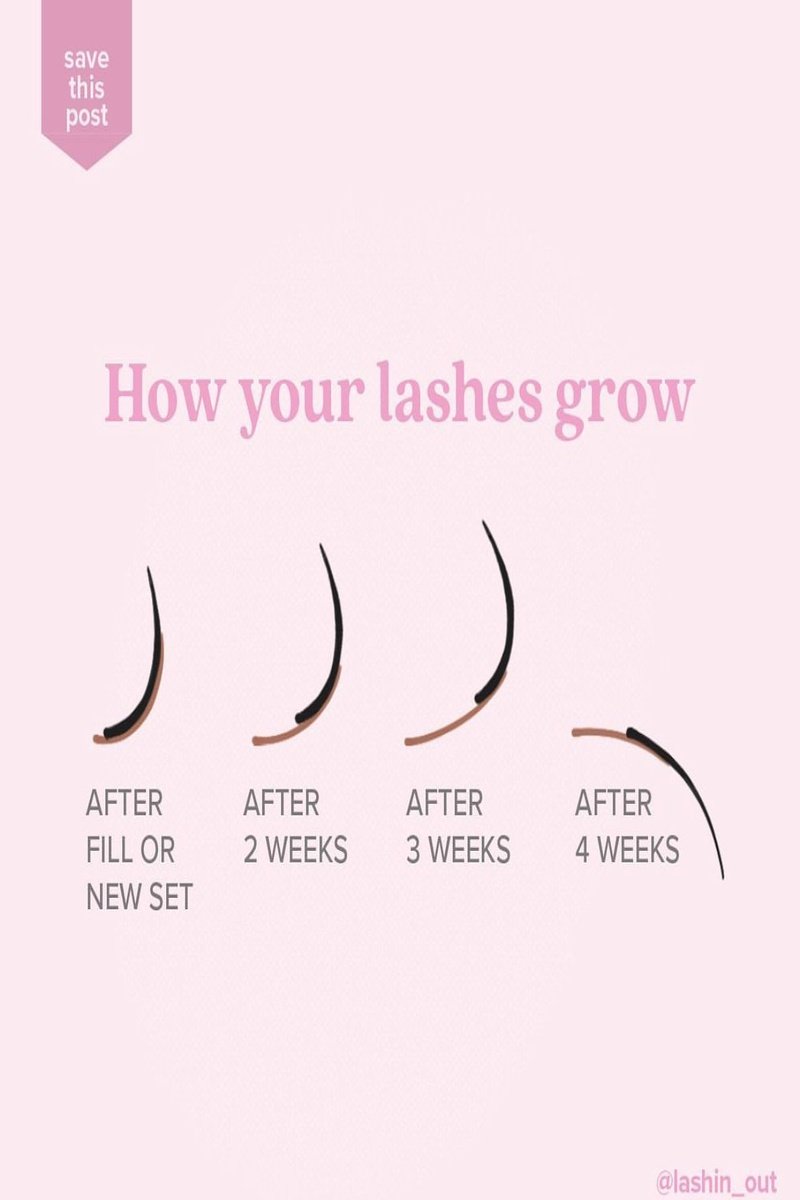Why Am I Losing Lashes? The Truth About the Lash Shed Cycle
We've all heard it before: eyelash extensions make your lashes fall out.
But is it true? The answer is no!
Your natural lashes follow a lash shedding cycle. Shedding is a natural process that happens with or without extensions.
In this blog post, we’ll break down the lash growth cycle, explain seasonal shedding, and share expert tips to keep your lash extensions in tip-top condition!
The Lash Shedding Cycle
Your lash hairs go through a natural growth cycle, just like the hairs on your head.
Your eyelash growth cycle has three main phases:
1. Anagen Phase (Growth Stage)
The anagen stage is when new baby lashes actively grow from the hair follicle.
It lasts between 4 to 10 weeks. The longer a lash remains in this phase, the longer it can grow. During this time, lashes are attached firmly to the follicle and are not ready to shed.
2. Catagen Phase (Transitional Stage)
During the catagen stage, your lashes stop growing and prepare for the shedding process.
This relatively short stage marks the transition between growth and rest. If an eyelash extension is attached to a lash in this phase, it may shed more quickly since the lash is no longer anchored for continued growth.
3. Telogen Phase (Shedding Stage)
Finally, the telogen stage is when the lash naturally falls out to make room for a new one.
It’s completely normal to lose 2-5 lashes per day, even more during certain times of the year. Shedding is part of the body's renewal cycle so that fresh, healthy lashes can continue to grow.
How Often Do Lashes Shed?
The entire lash shedding cycle takes anywhere from 28 to 90 days.
Individual factors such as age, health, and environmental conditions affect the length of your natural lash cycle.
Because of this continuous cycle, your lash extensions will shed naturally along with your natural lashes. Keeping up with refill appointments every 3-4 weeks will help you maintain a full and beautiful lash line.
Factors That Affect Lash Shedding
Many factors influence how often you lose lashes. Let’s explore some of the most common causes.
Seasonal Shedding
You may notice more lash loss in certain months. That’s because seasonal changes affect your hair growth cycle. Here’s how:
Warmer months: Higher temperatures lead to increased oil production, which can weaken the lash adhesive. Your body also speeds up the lash growth cycle, causing lashes to shed at a faster rate.
Colder months: The autumn season brings seasonal lash fallout as your body replaces summer lashes. Dry air in winter months can make our hair brittle, leading to excessive shedding.
Hormonal Changes
Hormones play a big role in the lash shedding cycle.
Certain life events or medical conditions can cause excessive shedding or slow lash regrowth. These include:
Pregnancy: Increased estrogen levels can delay shedding, but post-pregnancy hormonal shifts may cause sudden lash loss.
Menopause: Lower estrogen levels can slow the growth of lashes, making them appear thinner.
Thyroid issues: Both hyperthyroidism and hypothyroidism can disrupt the natural cycle and lead to excessive lash shedding.
Medications
Certain medications may cause premature shedding or weaken the hair follicle.
If you’ve noticed a change in your lash retention, check if you’re taking any of these:
Hormonal birth control
Blood pressure medications
Antibiotics
Antidepressants
Chemotherapy drugs
Do Lashes Shed More with Extensions?
Lash extensions shed with your natural eyelashes—it’s part of the natural lash growth cycle.
The difference? When a natural lash falls out on its own, you might not even notice. But with an extension attached, it’s more obvious, making it seem like you’re losing more lashes than usual.
Poor retention, however, can be caused by:
Not following an aftercare routine (cleaning lashes daily is a must!).
Stress on lashes from rubbing or sleeping on your face.
Skipping fills.
How to Keep Your Lashes Healthy
If you want to slow the rate of lash shedding and keep your lashes looking fuller, here’s what you can do:
Stick to refill appointments every 3-4 weeks. Book your appointments ahead of time to keep on a regular schedule.
Clean your lash extensions daily with Lash Suds Lash Shampoo and a clean lash wand.
Use a lash growth serum, such as Adoreyes Lash Serum, that’s safe for eyelashes with lash extensions.
Practice proper lash hygiene to prevent poor retention and premature shedding.
Be gentle! Rubbing or pulling can lead to more eyelash shedding.
Lash Extensions at The Beauty Block
At The Beauty Block, we bring beauty and precision together to create stunning, long-lasting eyelash extensions.
Whether you want effortless elegance or full-on drama, our expert lash artists customize every set to suit your style.
As Calgary’s Top Choice Beauty Spa of 2025, we offer more than just lashes—we’re your go-to destination for premium beauty services that keep you looking flawless.🌟
Book your appointment now and experience the best lash extensions in Calgary!
Frequently Asked Questions
Is seasonal lash shedding real?
Yes, seasonal changes impact the lash growth cycle, often leading to increased shedding in the fall and spring.
How long does the lash shedding season last?
Seasonal shedding typically lasts 4-6 weeks, depending on individual factors and environmental conditions.
How much shedding is normal for lash extensions?
It's normal to shed 2-5 natural lashes per day. However, external factors like lifestyle, aftercare, and seasonal changes can impact retention.

